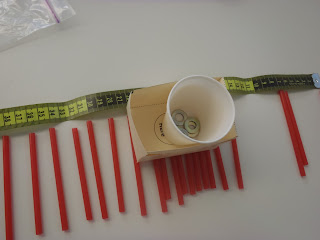Monday, June 25th, 2012
3:30-4:30pm
Our final presentation of the afternoon was led by Dynae Fullwood, a representative of NASA in the Teaching from Space office.
The Teaching from Space office is made to educate students and the community using the astronauts that are in the International Space Station, as well as archived information and videos. The department holds events throughout the year that schools in all parts of the country can take part in and that help peak the interest of students for the space program, as well as the STEM content areas.
To view the Teaching from Space website, visit http://nasa.gov/audience/foreducators/teachingfromspace/home/index.html
The website doesn't just give you information on events that they are holding throughout the year, there are also videos, documents, activities and more to support classroom instruction.
Some of the activities that we touched on in our development included:
This is a project that allows students to compare how different toys work on earth to how they would work in space. Students can play with the toys, predict how it would be different if they were to use them in space, then watch an actual video of an astronaut playing with that toy in space. It is a good way to connect to gravity, mass, friction, and how they work together on Earth.
Similar to the Toys in Space project, the NEEMO Science Under Pressure experiments take place in a chamber that has the same atmospheric pressure as being deep under water (2.5 times the pressure at surface level). The aquanauts (not astronauts) preform different tasks at this pressure that the students can perform at ground level, then predict what would happen under water (or at a pressure that matches that of under-water pressure). Again, they can watch videos of these aquanauts completing these experiments/tasks to check their predictions. (Example: One of the experiments done is the mentos and coke experiment... what do you think would happen at higher pressure?)
Spaced Out Sports is a design challenge that encourages students to create a sport or game that they want to see played in Space. If their game/sport is chosen, astronauts on the ISS (International Space Station) will play the game on the Space Station, then send the student a video of the results. It is a very exciting way to get students to use all of their creative mediums to create a game, as well as a way to get them involved and connected to science and the space program. This is an annual competition.
The last activity that we did with Ms. Fullwood was an experiment to learn about the difference between Mass and Weight. This was actually a very interesting experiment to do because even I couldn't tell the true scientific difference between mass and weight before completing it.
To do this experiment, we used straws (cut in half), a cardboard 'car', a dixie cup, a measuring tape, metal washers, and an air pump. We made a track out of the straws and placed the 'car' with the dixie cup inside. We used the air pump to move the car along the straws by applying one pump of air. We were tracking the mass of the car, as well as how far it moved on each of three attempts. After three attempts with no mass added to the car, we added 5 washers (or pennies could be used) to the cup and tried again.
Although students would be partaking in this experiment in order to learn about weight and mass, our professional group used the experiment to find all of the inconsistencies that could take place during the process. There are many variables that need to be considered before taking data, such as the distance between the air pump and the car, the angle of the air pump, the force added to pump the air, the placement of the car on the straws, and whether or not the straws were obstructed by the measuring tape.
To view and download a complete pdf on this experiment so that you can do this in your classroom, click here.
Note that the TFS (Teaching from Space) website provides supporting videos and activities to do with this experiment.





No comments:
Post a Comment